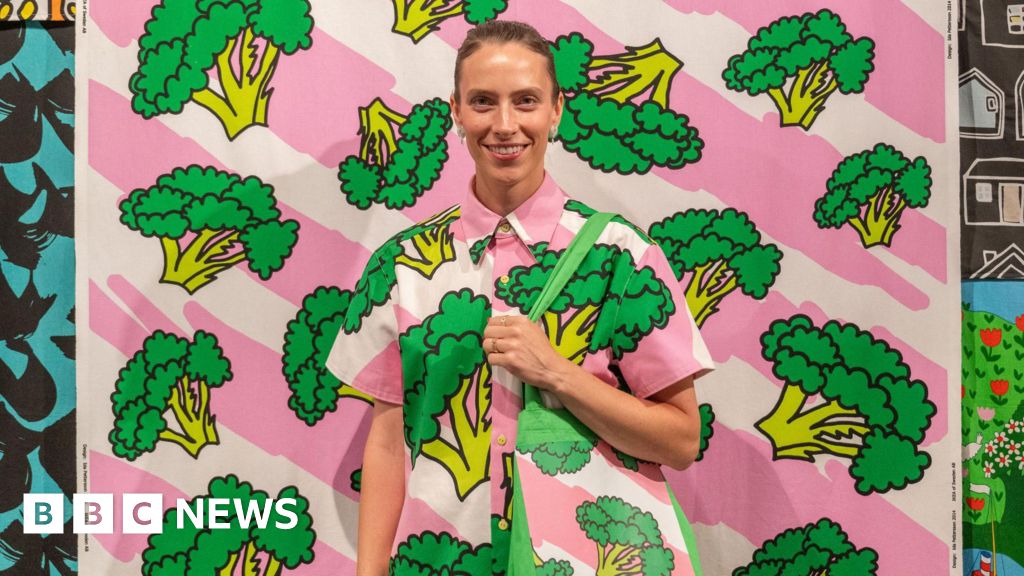BBC Scotland Arts Correspondent
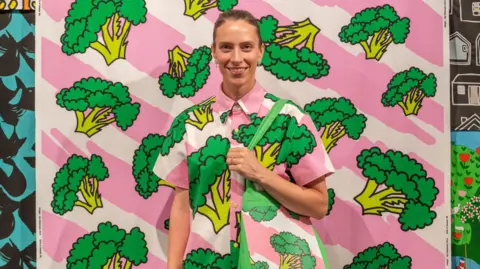 Phil Wilkinson
Phil WilkinsonIngvar Kamprad was just 17 years old when he set up a mail order sales business in 1943.
Offering flat-packed goods which could be assembled at home, he used his initials and his bearings at the family farm in Elmtaryd in the village of Agunnaryd in Sweden to create the name of his new business – Ikea.
Eight decades later, Ikea is one of the biggest retailers in the world, known for its modernist approach, simple designs and customer engagement.
It even has its own museum – on the site of the first store in Almhult – which has curated an exhibition of iconic fabrics which celebrate the company’s pioneering textile department.
 Phil Wilkinson
Phil Wilkinson“At the beginning of the 60s Ingvar realised that what was missing was the textiles and colour which are so vital to the home,” says the museum’s curator Anna Sandberg Falk.
“So he brought in a bunch of really talented young women who knew the textile business – and because no-one really cared about textiles, they had a lot of freedom. They were young, and curious and they had a lot of fun.”
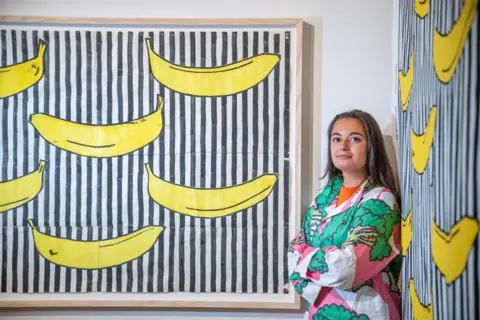 Phil Wilkinson
Phil WilkinsonIn 1962, IKEA hired Danish textile artist Bitten Hojmark and later Inger Nilsson who introduced new technology, bold patterns and the first Swedish version of the Natural Colour System.
Developed by physicist Tryggve Johansson at Sweden’s National Defence Research Institute, it uses a scientific approach to describe and reproduce colours accurately on a wide range of products and materials.
It was an important breakthrough and artists such as Inez Svensson, Gota Tradgardh and Sven Fristedt revelled in their new-found colour palette – even if their designs weren’t always instantly appealing.
“Randig Banan was created in the mid 80s. It was so brave and bold but it was considered to be something that would scare the customers away so it was hidden away under the table,” says Anna Sandberg Falk.
Re-released in 2013 as part of a temporary collection, it’s become one of the company’s most popular designs. Despite being one of many prints designed by Ines Svensson, it was the one she requested that her coffin be draped in and when she died at the age of 73. This was duly honoured.
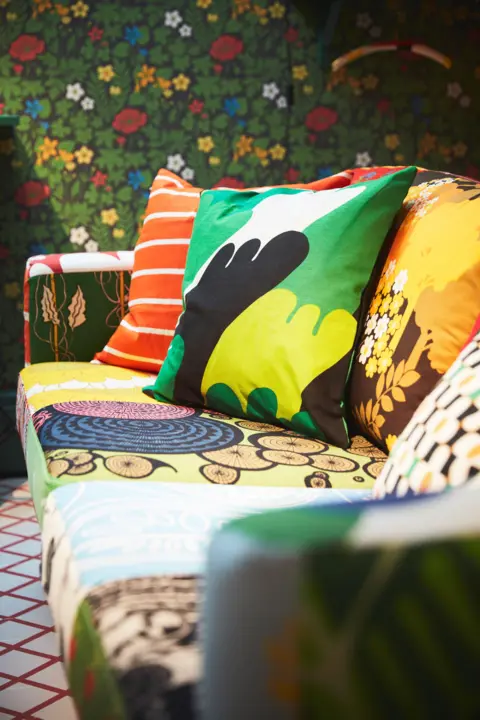 Ikea museum
Ikea museum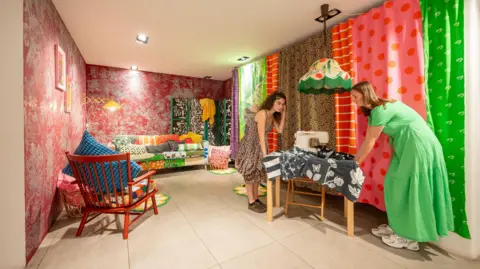 Phil Wilkinson
Phil WilkinsonIt has since inspired many designers including Ida Pettersson Preutz.
“I was 10 years old, and I think my sister introduced it to me because she bought it second hand and made a cushion of it, and I instantly fell in love with it, ” she says.
So when she was commissioned to make a pattern around food in 2014, she channelled the same playfulness with her bright green broccoli motif on a background of wavy neon pink stripes.
” I always like to add a little twist, a twinkle in the eye in the patterns that I do. Something which makes people feel the same way I felt about striped bananas.”
Her design has pride of place among 180 textiles which feature in a new exhibition at Dovecot Studios in Edinburgh.
It highlights the work of 10-gruppen – a collective of 10 Swedish designers founded in 1971 who rebelled against the small flowered textile norms of the early 70s in favour of bright colours and bold patterns.
Their work was echoed in the 1996 advertising campaign “Chuck out the chintz”.
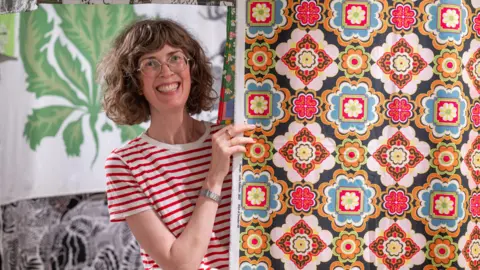 Phil Wilkinson
Phil WilkinsonDovecot’s director Celia Joicey has been negotiating with Ikea Museum since it opened in 2016 and has secured the first touring exhibition.
“Dovecot is a tapestry studio so we make the finest fine-art textiles by hand which are expensive and exclusive to acquire so the idea that we could bring this element of democracy where there are fabrics that everybody can use and we can hang them as works of art is interesting,” she says.
“Textile is an important medium for Scotland and it has a long history of taking design to the rest of the world.
“But Swedish design has had a huge impact on the world, starting with the post war housing boom which saw 1.2 million homes being built in the UK in a very short space of time.”
The two very different design spaces hope this will be the start of a productive collaboration. The 180 textiles on show are just a fraction of those held in the Ikea Museum archive.
“I think we could do another 10 exhibitions like this,” says Anna.
“There’s so much to choose from.”
And for Ida Petterson, whose vibrant broccoli is the central image of the exhibition, it’s an honour to be part of Swedish design history.
“It’s a “pinch me” moment,” she says.
“To have my work hanging alongside the designs which inspired it is lovely.”
Ikea: Magical Patterns is at Dovecot Studios until 17 January 2026
